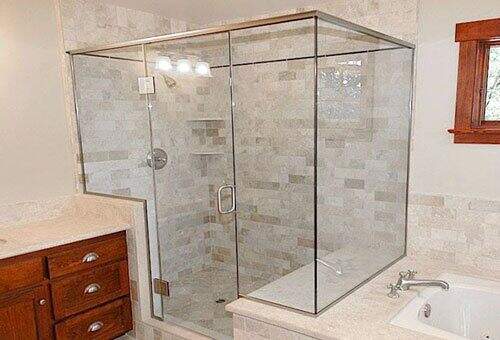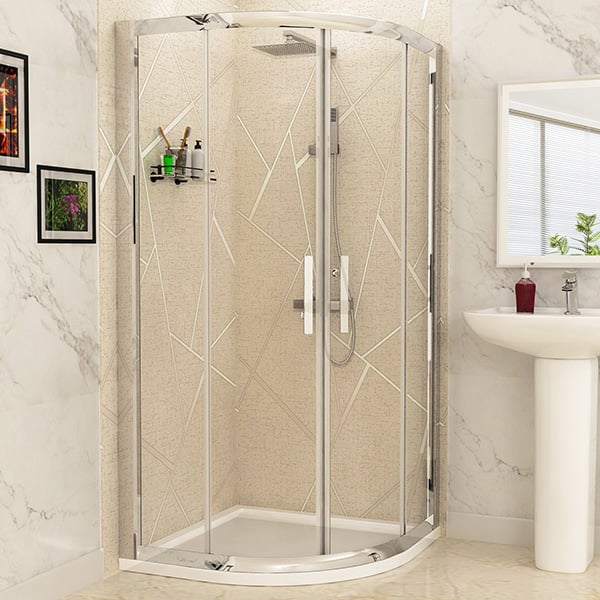Effortless Ways to Install a New Shower Unit Like a Pro
Effortless Ways to Install a New Shower Unit Like a Pro
Blog Article
Were you hunting for insight on How to Install a Direct-to-Stud Shower Enclosure?

An effective shower setup needs careful planning and a great deal of work. In many cases, you will require to do three types of tasks: mounting walls, installing the plumbing, and also finishing wall surfaces.
Prep work
First of all, you must decide on the type of shower that you wish to install. It is important to establish whether the selected shower can dealing with particular systems and also can manage a safe degree of water through the boiler. Most shower systems nowadays are developed to be flexible to various water pressures (such as saved warm water and also chilly keys).
It is likewise vital to consider the water pressure and also the planning of the piping as well as water drainage for the shower
Various Kinds Of Shower Units
Approach
Relying on the type of shower you want to set up, the shower head should either be suited order to avoid its contact with the water in the bathroom below or the base tray, or it has to have a check shutoff.
Prior to beginning, it is recommended to mark the placements of the shower head and also control, and also to intend the pipe-work entailed. Furthermore, the drainage system to remove the waste water will need to be prepared. Both placements of the cable television route and also the shower button will likewise need to be taken into consideration if an instantaneous or electric shower unit is being set up.
Utilize the guideline guide given with the shower device to fit the shower control.Before fitting the pipes that will supply the water to the shower system, it is important to cut off the water supply. In order to shield the pipes, they should be provided a water resistant covering and also fitted with isolating shutoffs. The pipelines can then be hidden into the wall as well as plastered over to neaten the general appearance.
Fit the base tray, shower head, and also fittings.
Attach the main shower control to the pipes that will be supplying the water (This may require a women screw thread adapter).
Reconnect the water supply and also test the pipelines for any type of leaks, as some might need tightening.
If you are mounting an electrical shower, bear in mind to switch off the power supply before making any type of electric links. Once these connections have actually been made (there need to be support within the user's manual), the power supply can be switched over back on.
Changing Water Pressure to Match Your Shower
The cold water storage tank can be lifted to a higher height (occasionally just 150mm (6inches)) by installation a solid wooden support beneath it - perhaps composed of struts and blockboards. If you pick this alternative, the primary and circulation pipelines will additionally have to be elevated to satisfy the new height of the tank.
Conversely, a booster pump (a single pump or a dual/twin pump) can be fitted. Whichever kind is picked, it must be linked right into the power supply in order to run.
Piping and Drainage
It is best to utilize 15mm size supply pipelines, as well as make the go to the shower as brief and also straight as feasible so regarding maintain maximum stress and also reduce warm loss. Furthermore, by reducing using arm joints for pipe corners, you can decrease the resistance in the circulation of the water system. You can achieve this by bending the pipes rather.
A Lot Of Usual Mistakes
How Do You Install a Shower? Follow This Guide
Installing a Shower at a Glance
Tools & Materials: Level, electric drill, caulk, hole saw, cedar shims, shower unit Step 1: Drill pilot holes Step 2: Prep fixture holes Step 3: Move unit into place Step 4: Caulk corners and base Step 5: Attach door Step 6: Install shower pan Whenever plumbing is involved in a DIY project, people worry about what might go wrong. The truth is that installing a shower isn’t that complicated, and you can save a lot of money by doing it yourself. You shouldn’t need to make any alterations to your plumbing to complete the job, and most of the tools you need will be provided in your new shower kit.
Can I Install a Shower Myself?
Even if you’ve never installed a shower before, you’ll find this to be a project that is perfectly suited for DIYers with a moderate level of experience. Whether you're doing a bathtub conversion or installing a new stall, most of what you need comes in shower kits that you can purchase from a hardware store. The first thing you need to do is determine what type of shower stall you want.
Single-panel stalls are the easiest to install because they come preassembled. All you need to do is put them in place. Multi-panel showers require a few additional steps, but you’ve got more control over the appearance of your unit. Multi-panel units are also much easier to handle if you’re going to do the installation without any help.
Be sure to take all appropriate safety precautions, such as wearing eye protection and gloves. When you’re removing or installing a shower unit, you might kick up debris that could hurt your eyes. You’ll also need to work with equipment that will get extremely hot, so be sure to have safety gloves handy.
Tools and Materials
2- to 4-foot level Electric drill with a 1/8-inch drill bit Caulk 2-inch hole saw Cedar shims The unit itself Before You Begin: Prep the Space
It’s highly important to measure your space accurately before putting the stall in. Measuring from the floor upward and from each corner outward will ensure you’ve got the right measurements. What you’re looking for is where the plumbing apparatuses are going to come through the stall. Transfer these measurements over to the back of your unit by drawing the locations of these holes using a pencil or marker.
Pull out your old shower and make sure to scrape off all the old caulking. Be thorough because you want to work with smooth surfaces for the best installation. Once you’ve pulled out your existing shower, you need to make sure that the floor is clean and dry. The best way to clean debris is with a shop vacuum, as it’ll soak up water and dirt together.
If you’re experiencing any plumbing issues, such as low water pressure, this is a perfect opportunity to solve them. Make sure that the pipes themselves are not in need of patching and clean your showerhead. When you turn the water back on after your project, check the pipes for signs of wear or disrepair. Anything beyond minor repairs should be handled by a plumber, and this is the best time to bring in a professional.
If the floor has any moisture at all, don’t proceed until it’s completely dry. The last thing you need is for the floor to rot or invite mold and mildew into your base. Once everything is dry, apply waterproof wallboard to the walls. This can be attached with screws or nails, then sealed with caulk so that water doesn’t seep into any crevices.

I found that blog posting on How to Build a Shower Enclosure for Your DIY Bathroom when browsing on the search engines. In case you enjoyed reading our post if you please don't forget to share it. Thanks a bunch for your time. Don't hesitate to visit our website back soon.
Schedule Appointment Now Report this page